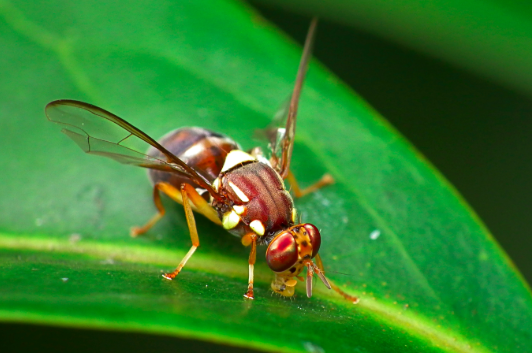Canine cognitive dysfunction looks a lot like Alzheimer’s and dementia in humans. Could a disease-modifying intervention that seems effective our furry companions also work for humans?
For decades, scientists have used mouse models to study Alzheimer’s and develop new treatments. The only problem: Mice don’t normally develop Alzheimer’s pathology. That means researchers need to genetically modify mice brains to produce human amyloid proteins — the hallmarks of human Alzheimer’s.
Using this imperfect model of disease has led to more than a 99-percent rate of failure for new drugs for the disease. Meanwhile, curiously, scientists have discovered that dogs develop canine cognitive dysfunction whose symptoms and pathology bear a striking resemblance to Alzheimer’s — memory and learning impairments, changes in sociability, and sleep problems.
Now, a company called Skin2Neuron has published their veterinary trial, which appeared to successfully treat canine cognitive dysfunction — doggy dementia — and announced their intention to start a clinical trial to see if the treatment also works in humans.
To treat the dysfunction — disorientation, anxiety, and difficulty remembering routines — scientists took skin cells from the dogs and used a cocktail of cellular factors to transform them into neural precursor cells. These personalized precursor cells were then injected into the hippocampus, the region of the brain important for memory.
Four out of the five dogs recruited for the study showed substantial cognitive improvements three months after the injection. Two dogs underwent a full reversal of the condition two years after the initial treatment.
Michael Valenzuela, the company’s CEO, told Being Patient that he believes that anti-amyloid approaches might not be sufficient to fix the damage caused by the disease.
“It’s hard for me to imagine a small molecule or drug that could have that kind of huge biological effect,” he said. “That’s why we’re having to go down the route of delivering cells to a specific spot.”
Valenzuela and his company are now preparing to take their approach to clinical trials for humans with Alzheimer’s pathology sometime in the next two years.
Dogs: a better model than mice?
Early in his research career, Valenzuela said he grew skeptical of approaches to Alzheimer’s that targeted amyloid plaques in the brain.
“I had the view that a significant part of the reason why human trials were failing was because the launching pad for those were transgenic mice models,” he said, adding that these models inserted the leading hypothesis of Alzheimer’s into the story.
Rather than treating Alzheimer’s, he believes these studies were “treating our hypothesis.”
Only one Alzheimer’s drug targeting amyloid plaques in the brain has been approved by the FDA and its efficacy is still controversial. While there are other anti-amyloid drugs in Phase 3 clinical trials — lecanemab, donanemab, gantenerumab — the drugs are not designed to compensate for the millions of neurons already lost to Alzheimer’s disease.
“The problem that we’re trying to treat is that even at the earliest stage of Alzheimer’s, you’ve probably lost at least 10 million neurons in each hippocampus,” Valenzuela said. “By the time someone gets symptomatic, that is a massive deficit that totally disrupts normal hippocampal memory function.”
Searching for a more appropriate model, Valenzuela collaborated with Paul McGreevy, an associate professor at the University of Sydney, to look at dogs — a natural model of cognitive dysfunction.
“We developed a system to diagnose and score this dementia-like syndrome in dogs,” he said, adding that he also began looking at the pathology present in their brains. “At every turn, the similarities with human Alzheimer’s just became stronger and stronger.”
If he could show a treatment worked in dogs, he believed it would be more likely to translate to humans. Valenzuela and his team turned their focus to stimulating the growth of new neurons and connections in the brain as a method for treating the disease.
Skin cell alchemy
Unlike many other types of cells in the body, brain cells don’t normally divide over the course of their life span. They form earlier in life from neural precursor cells, but these cells aren’t easy to find — you won’t find a lot of them easily accessible in your couch cushions.
Instead, Valenzuela and his team took skin cells from each individual dog in their study and reverted them into neural precursor cells. While this process doesn’t require incantations, it involves a chemical cocktail of factors that sound like they’re spells ripped straight from a young adult fantasy novel.
These new neural precursor cells were nourished and grown until the researchers had enough — 250,000 cells which would be injected into the canine hippocampus.
The researchers could then look at cognitive dysfunction in the dogs at the start of the experiment and three months later, comparing the treated animals to controls.
“The hippocampus, the memory center of the brain, was packed with baby neurons and new synapses, precisely where we delivered the cells,” Valenzuela said in a press release. “Compared to untreated dogs, it was like night and day.”
A 12-year-old Pomeranian named Leo showed dramatic cognitive improvements in the trial, according to his carer Fiona Gibbs.
“Before treatment, Leo was really bad, forgetting who we were, getting lost, and having these unpredictable episodes where he would growl and snap – it was really scary and we just couldn’t go on,” she said.
“A few months after treatment, he started getting better, and then he was back to his normal self, and we look back at the movies and think, ‘Wow, was he really that bad?'”
These changes were independent of tau and amyloid pathology, which are also present in canine cognitive dysfunction. “There was no kind of suggestion that the cell therapy had somehow modified or reduced the classical Alzheimer pathology,” he said.
While a similar treatment in humans would be invasive, Valenzuela notes that there are other treatments for neurodegenerative disorders that also require surgery. “It’s good to remind everyone that surgery for Parkinson’s disease in terms of implantation of stimulators is done quite frequently,” he said. “Because we’re trying to treat that loss of neurons and to do so I think you need more invasive delivery methods.”
This work has set the stage for a human clinical trial which will commence in 2024 in Australia.



